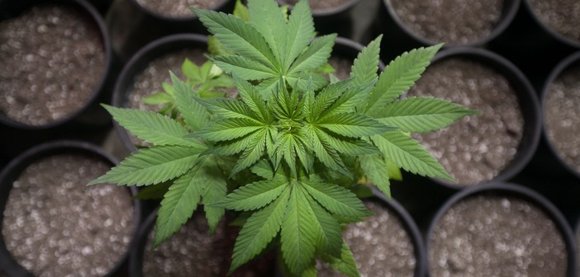Overall Teen Drug Use Low, But Marijuana Edging Up, Survey Finds
CNN/Stylemagazine.com Newswire | 12/14/2017, 8:08 a.m.
By Nadia Kounang, CNN
(CNN) -- Teen drinking, smoking and drug use overall are stable, but the percentage of teens using marijuana is increasing, according to a new report from the University of Michigan's Institute for Social Research.
This year's edition of the Monitoring the Future report, an annual survey of drug and alcohol use and attitudes among American eighth-, 10th- and 12th-graders, found that the percentage of students who had used pot in the previous year increased to 24%, up 1.3% from 2016.
Nearly 40% of all 12th-graders surveyed had used some sort of illicit drug in the past year, while 55.7% of them had used alcohol. Nearly 28% of 10th-graders had used an illicit drug, and 37.7% of them had alcohol in the past year. For eighth-graders, the percentage who had used illicit drugs in the previous year was just 12.9%, while 18.2% had had a drink.
The study, which is in its 43rd year, assesses about 45,000 students from 380 public and private secondary schools across the country.
Fewer teens see pot as dangerous
The increase in marijuana use was enough to boost the percentage of teens who used illicit drugs overall. This is the first time in seven years that there has been a statistically significant increase in marijuana use, said Richard Miech, lead author of the study and a research professor who studies drug use trends at the University of Michigan.
However, rates for both marijuana and illicit drug use overall are still lower than their peak in 1997, when 42.7% of 12th-graders had used any illicit drug and 38.5% had used marijuana in the previous year. In fact, overall drug use has generally been trending downward for all three grades since 2013.
Miech said the increases in marijuana use aren't surprising.
"Typically, as adolescents see less risk of marijuana use, the prevalence (of use) increases," he said. "And today, levels of perceived risk from marijuana use are at the lowest levels we've ever seen in decades. "
Last year's survey found that 68.5% of 12th-graders disapproved of regular marijuana use. This year, that percentage dropped to 64.7%. Miech and his colleagues also found that high school seniors from states with medical marijuana laws were more likely to have vaped marijuana and consumed marijuana edibles than those in states that had more restrictive laws.
Eight states and the District of Columbia have loosened laws on recreational marijuana use, according to NORML, a nonprofit geared toward marijuana law reform.
The perception that marijuana is not dangerous has been driven in part by society, said Dr. Nora Volkow, director of the National Institute on Drug Abuse, a part of the National Institutes of Health. Volkow's group funded the study. "Certainly, that leads to the idea that the marijuana can not be so harmful."
In fact, more high seniors now use marijuana on a daily basis than smoke cigarettes. When asked how frequently they had used in the past month, just 4.2% of 12th-graders said they smoked cigarettes every day, but 5.9% said they used marijuana.
Both Miech and Volkow said increased marijuana use was something to be on the lookout for. "My fear is that we may be seeing the start of a long-term increase in marijuana use among youth," Miech said.
Vaping trends
The survey also noted that while cigarette use continued to decline, nearly one in three 12th-graders had vaped over the past year. Vaping involves using an electronic cigarette, hookah or similar device and inhaling the vapors or aerosols. When asked what they had inhaled, over half of the seniors surveyed (51.8%) said they had used only flavored vaping liquids.
What was even more striking was that 11.1% of high school seniors said they had vaped with marijuana or hash oil, and nearly a third had vaped with nicotine.
"We are especially concerned, because the survey shows that some of the teens using these devices are first-time nicotine users," Volkow said.
Miech agreed: "There is considerable concern that vaping can led to use of cigarettes." He pointed to a recent analysis published in the journal JAMA Pediatrics of nine studies that found that even when controlling for factors like impulse and perceived risk of smoking, teens who vaped were more likely to experiment with cigarettes in the future.
The rate of students vaping overall remained relatively the same as in 2016. However, 2017 was the first year the survey asked detailed questions about what substances students vaped.
Though much of the larger national conversation about drugs has focused on opioid overdoses, teen use of heroin and prescription narcotics like oxycodone remains low, the survey found.









